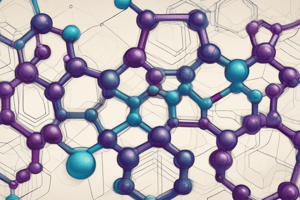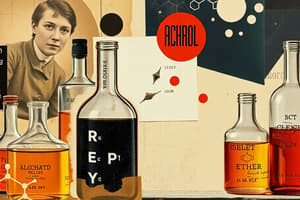Podcast
Questions and Answers
Explain the structural differences between alcohol, phenol, and ether molecules.
Explain the structural differences between alcohol, phenol, and ether molecules.
Alcohol molecules contain a hydroxyl (-OH) group, phenol molecules contain a hydroxyl group bonded directly to an aromatic ring, and ether molecules contain an oxygen atom bonded to two carbon atoms.
Discuss the reactivity differences between alcohol, phenol, and ether molecules.
Discuss the reactivity differences between alcohol, phenol, and ether molecules.
Alcohols can undergo substitution, oxidation, and dehydration reactions, while phenols are more acidic and can undergo electrophilic aromatic substitution. Ethers are relatively unreactive under normal conditions.
How are alcohol, phenol, and ether molecules commonly used in organic synthesis and industrial applications?
How are alcohol, phenol, and ether molecules commonly used in organic synthesis and industrial applications?
Alcohols are commonly used as solvents, in the production of esters, and as reagents in organic synthesis. Phenols are used in the production of plastics, pharmaceuticals, and disinfectants. Ethers are used as solvents and as anesthetic agents.
Flashcards are hidden until you start studying




